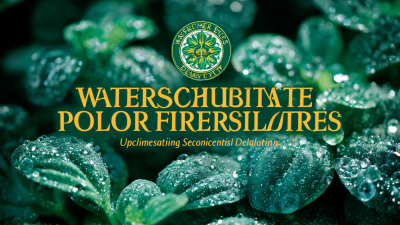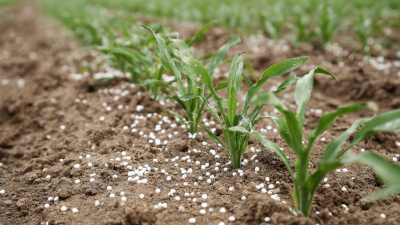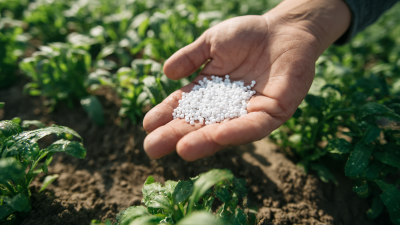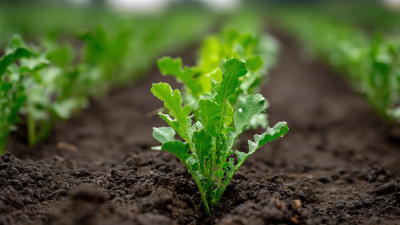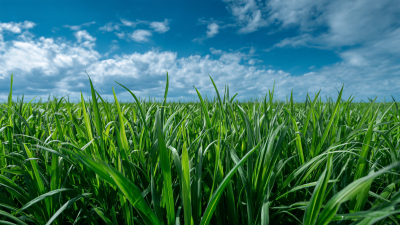In recent years, the significance of Water Soluble Magnesium Fertilizer has gained increasing attention among horticulturists and agricultural professionals alike. Research by the International Plant Nutrition Institute (IPNI) indicates that magnesium plays a crucial role in chlorophyll production, which directly impacts photosynthesis and plant growth. According to the Agricultural and Food Economics Journal, plants that receive an adequate supply of magnesium exhibit up to 30% higher yields compared to those that are magnesium deficient.
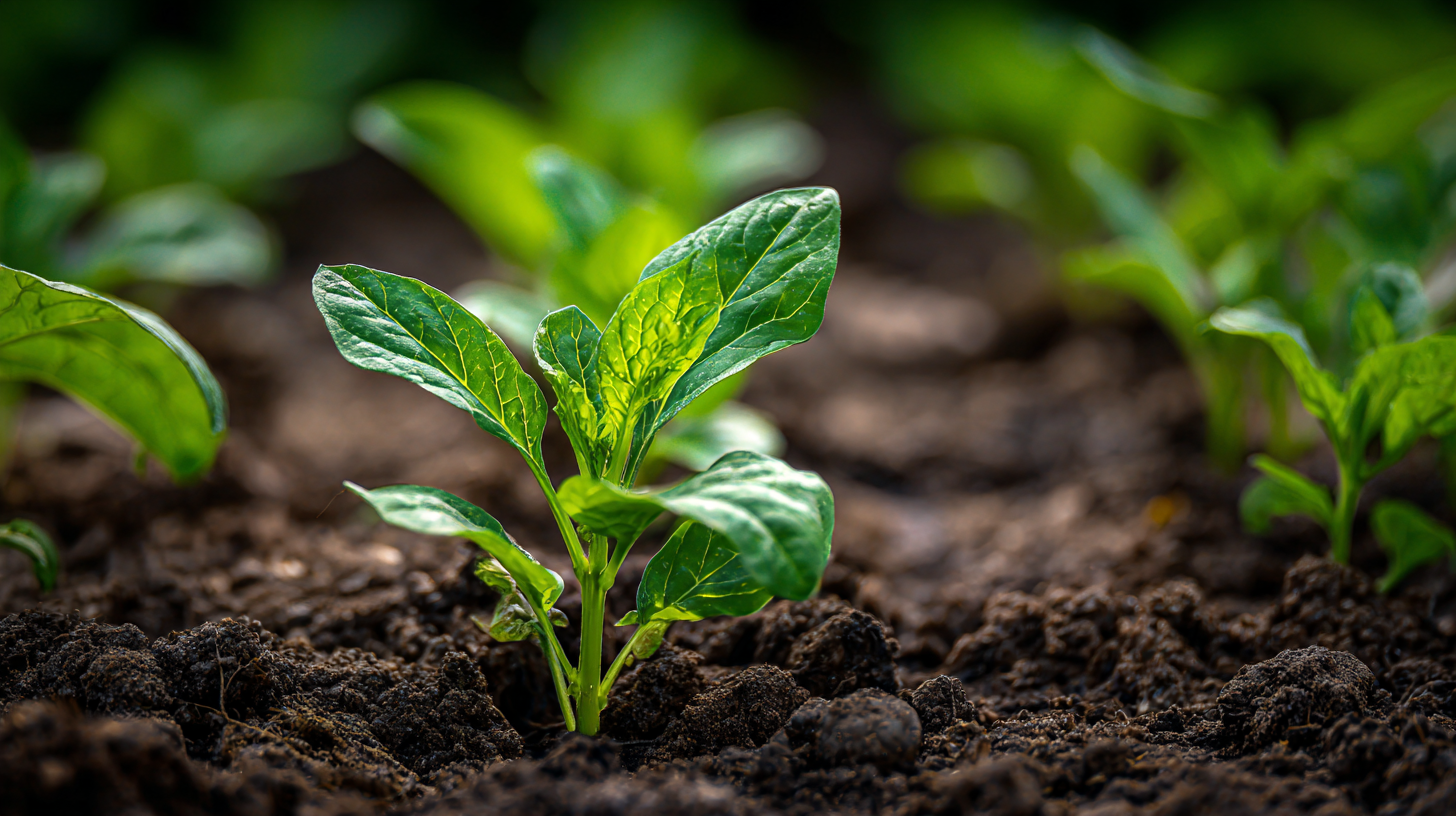
Furthermore, data from the Fertilizer Institute shows that the efficient uptake and rapid action of water soluble fertilizers can enhance nutrient absorption, promoting healthier plants and more vibrant gardens. As the demand for sustainable agricultural practices rises, understanding the multifaceted benefits of Water Soluble Magnesium Fertilizer is essential for maximizing crop productivity and ensuring robust plant health.
 Water soluble magnesium fertilizer plays a crucial role in enhancing plant health by improving photosynthesis, enzyme activation, and nutrient absorption. Magnesium, a vital component of chlorophyll, directly impacts a plant's ability to convert sunlight into energy, which is essential for growth and development. When applied correctly, water soluble magnesium fertilizers can quickly be absorbed by plants, leading to enhanced green foliage and vigorous blooms.
Water soluble magnesium fertilizer plays a crucial role in enhancing plant health by improving photosynthesis, enzyme activation, and nutrient absorption. Magnesium, a vital component of chlorophyll, directly impacts a plant's ability to convert sunlight into energy, which is essential for growth and development. When applied correctly, water soluble magnesium fertilizers can quickly be absorbed by plants, leading to enhanced green foliage and vigorous blooms.
Tips: To maximize the benefits of water soluble magnesium fertilizer, consider using it during the active growth phase of your plants. Diluting the fertilizer in water before application ensures better absorption through the roots. Additionally, monitor your plants closely for signs of magnesium deficiency, such as yellowing leaves or stunted growth, and adjust your fertilization regimen accordingly to promote optimal health.
It's also important to remember that while magnesium is vital, it works best in conjunction with other nutrients. A balanced approach, including a mix of nitrogen, phosphorus, and potassium, will help support overall plant vigor. Regular soil testing can help determine nutrient levels and guide your fertilization practices, ensuring a thriving garden all season long.
Using water soluble magnesium fertilizer in your garden can significantly enhance plant growth and health. One key advantage of such fertilizers is improved nutrient absorption. Magnesium plays a vital role in the synthesis of chlorophyll, which is essential for photosynthesis. Healthy plants with optimized chlorophyll levels can effectively harness sunlight, leading to vigorous growth and increased yield.
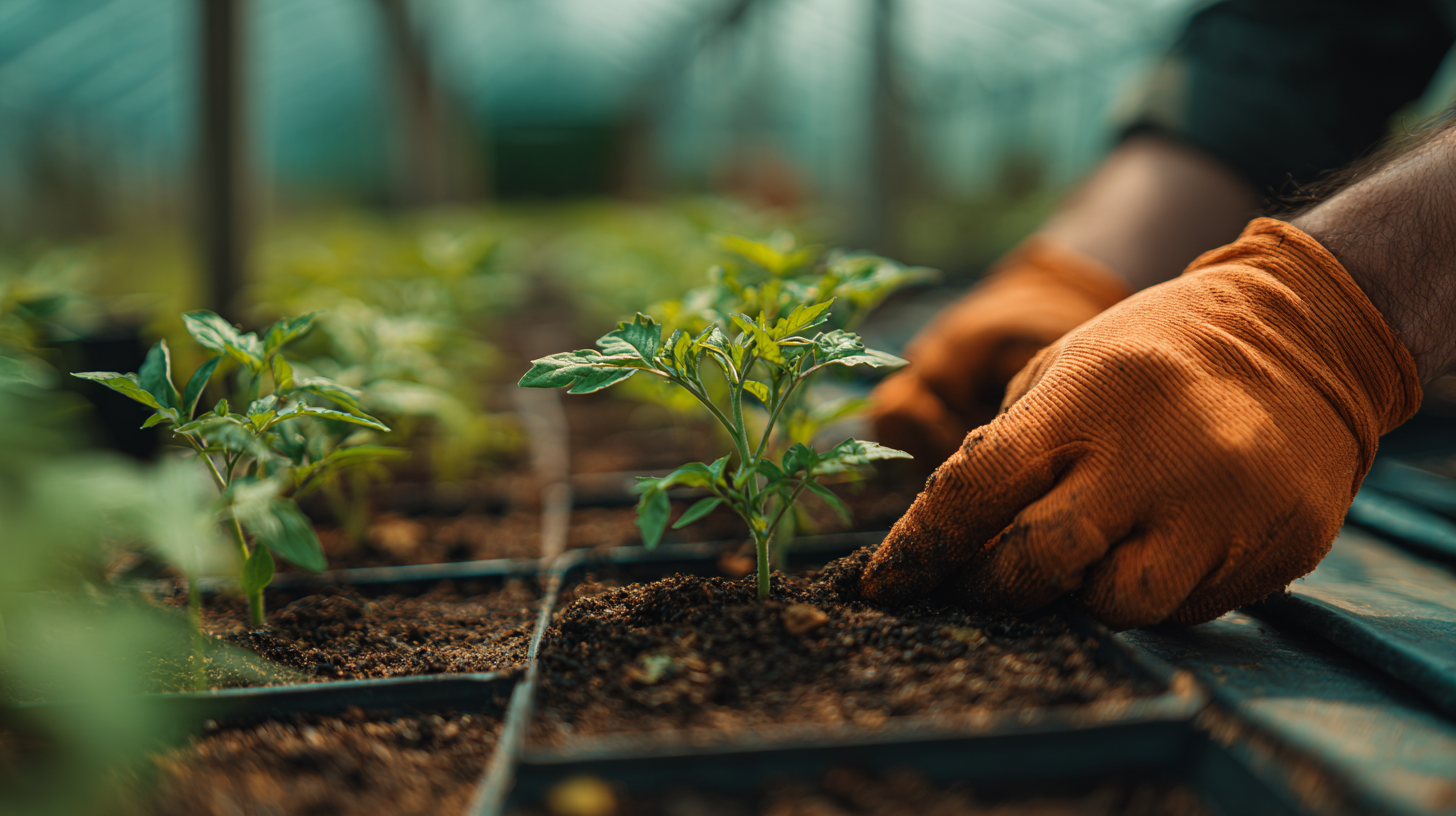
Another benefit of water soluble magnesium is its ability to prevent magnesium deficiency, which can adversely affect many crops. Symptoms of this deficiency include yellowing of leaves and stunted growth. Additionally, using magnesium fertilizers can enhance the overall quality of fruits and vegetables, as magnesium contributes to better flavor and nutritional content.
Moreover, applying water soluble magnesium can improve soil structure and fertility, creating a more conducive environment for beneficial microorganisms. This boost in soil health further supports the plant's root development, ensuring that they can access water and nutrients more efficiently. Thus, incorporating water soluble magnesium fertilizer is a strategic approach for any gardener seeking to cultivate thriving plants and vibrant gardens.
Water soluble magnesium fertilizers play a crucial role in enhancing plant health, particularly in optimizing photosynthesis and promoting nutrient uptake. To apply these fertilizers effectively, understanding the right timing and method is essential. Ideally, application should coincide with the growth stages of plants, especially during peak nutrient absorption phases. A general recommendation is to apply magnesium fertilizers as part of a pre-planting strategy or during the early stages of growth to ensure that plants can take full advantage of the available nutrients.
When applying water soluble magnesium fertilizers, it's important to follow the manufacturer's guidelines regarding dilution rates and application frequency. Typically, mixing magnesium sulfate or other soluble compounds into your irrigation system allows for even distribution and better absorption by the roots. Additionally, monitoring soil pH and moisture levels can help in optimizing conditions for magnesium uptake, ensuring that plants receive the right amount of this vital nutrient without the risk of toxicity or nutrient imbalances.
Regularly checking for signs of magnesium deficiency, such as yellowing leaves or poor growth, can also inform adjustments to your fertilization strategy, fostering a healthier, more vibrant garden.
When using magnesium fertilizers, it's crucial to avoid common mistakes that can undermine the health of your plants. One frequent error is over-application, which can lead to nutrient imbalances in the soil. Too much magnesium can interfere with the uptake of other essential nutrients, particularly calcium and potassium, resulting in symptoms like leaf curling or even plant death. It's important to follow the recommended dosage and frequency for your specific plant types to ensure optimal growth.
Another mistake is neglecting to test your soil before applying magnesium fertilizers. Without a soil test, you may not know if your plants actually need more magnesium or if the soil is already adequately supplied. Applying fertilizers indiscriminately can waste resources and harm the environment, making soil testing an essential step. Additionally, timing plays a critical role; applying magnesium fertilizers during the wrong growth stage can render them ineffective. For best results, make sure to apply them at the onset of growth when plants are most receptive to nutrient uptake.
This chart illustrates the impact of different concentrations of water-soluble magnesium fertilizer on plant height after four weeks of application. The data demonstrates how varying magnesium levels can lead to significant differences in growth, showcasing the benefits of using magnesium fertilizers effectively.
Water soluble magnesium fertilizer plays a crucial role in supporting plant health and growth. To maximize its benefits, it's essential to understand the best practices for application. First, timing is key; applying magnesium during early growth stages helps establish a strong foundation for plants. It is particularly beneficial during the critical phases of flowering and fruit development when magnesium needs are heightened.
In addition to proper timing, correct dilution and application methods can enhance nutrient absorption. Mixing the fertilizer with water according to manufacturer recommendations ensures that plants can easily uptake magnesium. Spraying the solution directly onto the leaves can provide immediate results, as plants can absorb nutrients more effectively through their foliage. Regular monitoring of soil pH and nutrient levels will also inform adjustments in fertilization practices, allowing for a tailored approach that meets the specific needs of your plants and garden.
| Nutrient Type | Benefits | Application Rate (kg/ha) | Ideal Plant Types | Application Timing |
|---|---|---|---|---|
| Water Soluble Magnesium | Improves chlorophyll production, enhances photosynthesis | 15-30 | Leafy greens, tomatoes, peppers | Pre-planting and throughout growing season |
| Magnesium Sulfate | Reduces nutrient lock-up in soil, promotes root growth | 10-20 | Flowering plants, fruit trees | During flowering stage |
| Chelated Magnesium | Increases nutrient availability, prevents deficiency symptoms | 5-15 | Hydroponics, container plants | Every 2-4 weeks |
